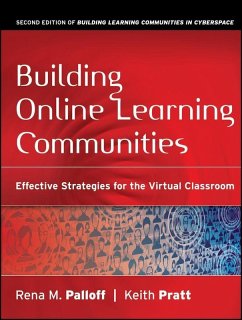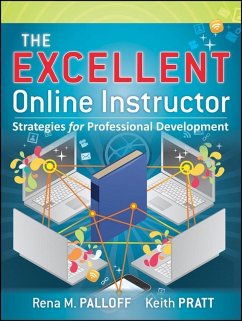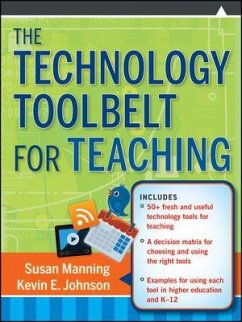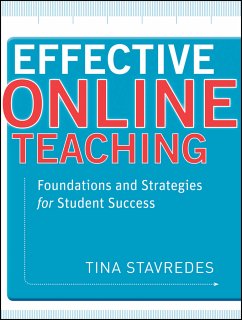
Lessons from the Virtual Classroom (eBook, ePUB)
The Realities of Online Teaching
Versandkostenfrei!
Sofort per Download lieferbar
32,99 €
inkl. MwSt.
Weitere Ausgaben:

PAYBACK Punkte
0 °P sammeln!
Lessons from the Virtual Classroom, Second Edition The second edition of the classic resource Lessons from the Cyberspace Classroom offers a comprehensive reference for faculty to hone their skills in becoming more effective online instructors. Thoroughly revised and updated to reflect recent changes and challenges that face online teachers, Lessons from the Virtual Classroom is filled with illustrative examples from actual online courses as well as helpful insights from teachers and students. This essential guide offers targeted suggestions for dealing with such critical issues as evaluating ...
Lessons from the Virtual Classroom, Second Edition The second edition of the classic resource Lessons from the Cyberspace Classroom offers a comprehensive reference for faculty to hone their skills in becoming more effective online instructors. Thoroughly revised and updated to reflect recent changes and challenges that face online teachers, Lessons from the Virtual Classroom is filled with illustrative examples from actual online courses as well as helpful insights from teachers and students. This essential guide offers targeted suggestions for dealing with such critical issues as evaluating effective courseware, working with online classroom dynamics, addressing the needs of the online student, making the transition to online teaching, and promoting the development of the learning community. Praise for Lessons from the Virtual Classroom, Second Edition "Palloff and Pratt demonstrate their exceptional practical experience and insight into the online classroom. This is an invaluable resource for those tasked with creating an online course." -- D. Randy Garrison, professor, University of Calgary, and author, Blended Learning in Higher Education: Framework, Principles, and Guidelines "Faculty will deeply appreciate and make use of the many explicit examples of how to design, prepare, and teach both blended and fully online courses." -- Judith V. Boettcher, faculty coach and author, The Online Teaching Survival Guide: Simple and Practical Pedagogical Tips "Lessons from the Virtual Classroom is filled with insightful caveats and recommendations, pointed examples to enhance your practice, succinct summaries of the research, and engaging visual overviews. Each page brings the reader a renewed sense of confidence to teach online as well as personal joy that there is finally a resource to find the answers one is seeking." -- Curtis J. Bonk, professor of education, Indiana University-Bloomington, and author, Empowering Online Learning: 100+ Activities for Reading, Reflecting, Displaying, and Doing
Dieser Download kann aus rechtlichen Gründen nur mit Rechnungsadresse in A, B, BG, CY, CZ, D, DK, EW, E, FIN, F, GR, HR, H, IRL, I, LT, L, LR, M, NL, PL, P, R, S, SLO, SK ausgeliefert werden.













